How protein became the world's hottest macro
Your body’s secret weapon
Lifestyle
Don't miss out on the headlines from Lifestyle. Followed categories will be added to My News.
As protein cements its star power from muscle to midlife, health seekers are clamouring for more of the macronutrient than ever before. But where does the hype surpass reality? Nutrition experts serve up the facts.
On the surface, there aren’t many common denominators between the steak you ate last night, that $1 can of chickpeas sitting in your pantry and the post-Pilates peanut butter smoothie that really gets you through after a 7am class.
But dig a little deeper and they’re all home to a nutritional MVP; one that has your back with everything from energy and muscle mass, to how you’ll fare in your future years. Any guesses? Top marks: we’re talking about protein.
This powerhouse macro has long enjoyed the spotlight, but lately, much like noughties favourite Adam Brody, its glow is brighter and fan base louder than ever. Google searches for ‘protein-rich breakfast ideas’ have jumped by 160 per cent in Australia over the past three months, while the global value of the protein ingredients market is tipped to reach nearly $130 billion by 2028, according to a recent MarketsandMarkets report.
Big wellness names are singing protein’s praises (bestselling author Dr Gabrielle Lyon recently described it as “the foundation for keeping your body forever strong [and] healthy”) and our social feeds are awash with folks – from carnivores to the plant-based – sharing how they optimise their intake. The latest TikTok trends include high-protein ‘fluffy yoghurt’ (aka, whipped Greek yog) and an unofficial Diet Coke/protein shake mash-up. What’s clear? Everybody wants in on the macro game.
“Protein gets a lot of positive airtime because of how important it is for so many bodily functions,” says Chloe McLeod, an accredited practising dietitian and the founder of Verde Nutrition Co. “But I also think sometimes it gets a bit more attention than it probably needs. Other areas should have airtime, too.”
It’s no wonder such hype can spark confusion, as we navigate information (and misinformation) to try and figure out what’s best for us. As dietitian and Nutrition For Living founder, Annabel Johnston, tells Body+Soul: “Some people aren’t having enough protein, while others are completely overdoing it – they’re influenced by the likes of Joe Rogan and Jordan Peterson talking about the carnivore and keto diets, and prioritising it too much.”
That’s why nutrition experts are working overtime to sort the foodie fact from fiction and help wellness-seekers find balance in the bright light of protein’s halo. So, before you throw another rib eye on the grill or start biohacking your soft drink, why not get a legit scoop on everything you need to know? Let’s tuck in.

Reputation on the rise
As for what’s driving protein’s latest popularity surge, Johnston believes that it’s partly thanks to our recognition of the macronutrient’s impressive benefits beyond gym gains.
Sure, protein is essential for ‘muscle protein synthesis’ – helping your muscles to repair and grow after exercise – but it also has a hand in supporting *deep breath* hormone production, immune function, appetite management, injury recovery and blood sugar balance – to name just a few. Plating up enough can also play a role in managing conditions like diabetes and polycystic ovary syndrome, Johnston points out, while caveating that it’s of course best to seek advice from your healthcare professional.
Another factor in the mix? The simultaneous spotlights on menopause and healthy ageing, which are both periods where it’s worth adding legumes, fish, eggs, nuts, dairy and lean meats to cart. “Eating enough protein helps with maintaining muscle mass as you age – important for bone strength, quality of life and more – as well as managing some of the symptoms associated with perimenopause and menopause,” explains McLeod.
Our body’s appetite for the nutrient might even increase during peri, suggest University of Sydney researchers, who believe this could contribute to weight gain if we’re falling short and instead filling up on other less-nutritious foods.
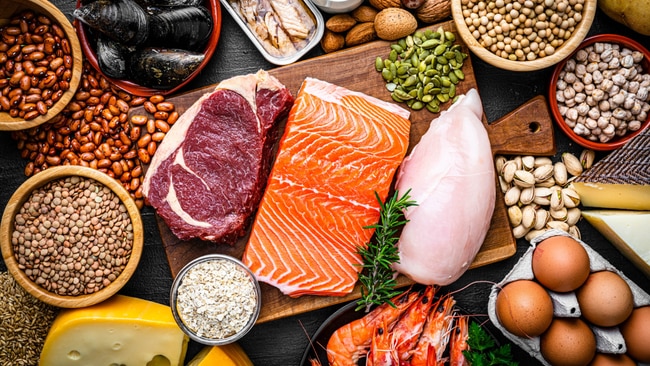
For Mary Doube, 51, the meno magic of protein totally rings true. After struggling with the onset of peri symptoms in her early 40s (including sleep troubles, mood changes, weight gain and hot flushes), she began learning how to strength train and fuel her body with a macro-balanced plate. Fast forward and it’s been a game-changer for both her wellbeing and career: Doube is now a weightlifting coach and co-founder of new menopause platform, Aviiana, which offers nutrition, fitness and community support. She proudly rocks the nickname ‘Strong Mary’.
“You’re talking to a woman who always carries a tin of tuna, nuts and a banana in her handbag for a balanced snack,” shares Doube with a laugh. “Prioritising protein helps me to maintain my muscle mass and manage weight, as well as helping with mood, fatigue and energy crashes.
“I recently redid a DEXA [bone density] scan, too, after having one years ago, and the improvement in my bone strength is significant. I still have a hot flush here and there, and I still feel brain fog; it hasn’t been easy. But my new outlook on food and training has made so much difference.”
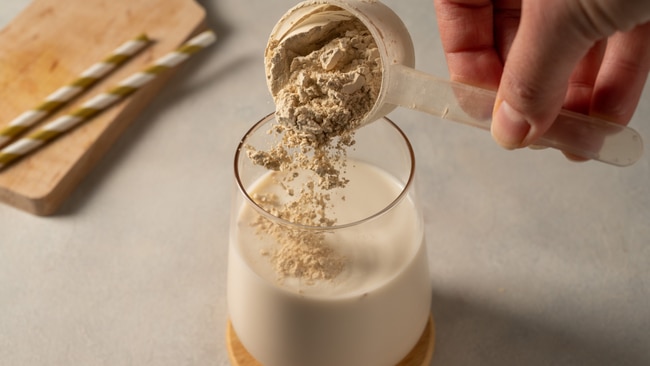
Navigating macro maths
Search ‘protein’ on social media and it’s easy to fall down a rabbit hole of ways to score 140 grams, 150 grams or even more of the macro daily. So, are these the whey-fuelled heights we should be aiming for? Well, not so fast.
“For certain people, 140 grams a day could be appropriate in some instances, but in others, I’d say that’s a very high intake,” says McLeod. “As women, our bodies generally require 0.9 grams of protein per kilo of body weight per day to function. So, for example, if you weigh 70 kilograms, you’d need a little under 70 grams of protein.
“In many instances, I am likely to recommend more – 1.5 to 1.8 grams is a good range to aim for that’ll help with managing your muscle mass and staying strong and healthy. For people looking to gain muscle mass, that number could be two grams, sometimes up to 2.5, but it depends on their energy requirements, body size and physical activity. These ranges can all change with gender, age and life stage.”
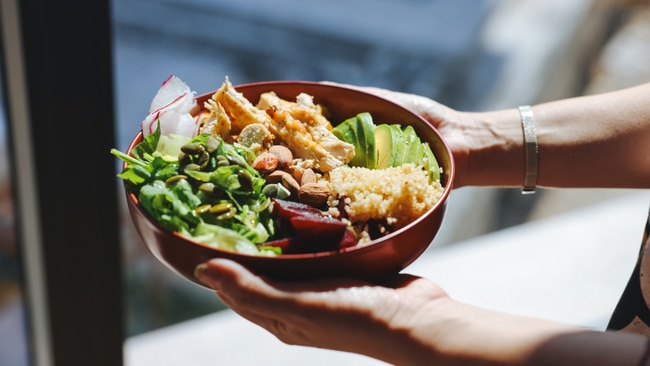
And shooting for more isn’t a golden ticket to extra gains, she explains, plus it could put the rest of your plate in jeopardy. After all, if you’re over-consuming or hyper-focused on protein, there’s a risk of other valuable macros and nutrients (like fibre and carbohydrates) being crowded out. Cue low energy and off-kilter wellbeing. Excessive dietary protein might also have a negative impact on artery health, hints a 2024 study published in the Nature Metabolism journal, although further research is needed.
Getting into the nitty-gritty with numbers can prove to be problematic for some of us, especially those with a history of disordered eating. So instead, consider keeping things simpler and more enjoyable by “just aiming to include some protein in each meal – about a palm-sized portion or a quarter of the plate, whichever is bigger,” tips Johnston. “People might need a little bit more or a little bit less, but that’s a standard guideline.”
Both experts recommend spreading your intake over the day for sustained energy and balanced appetite. Doube – who opts for the palm-sized approach – might include egg or protein powder in her brekkie, then some chicken in lunch, before making a lentil soup or chickpea salad for dinner. Chef’s kiss.
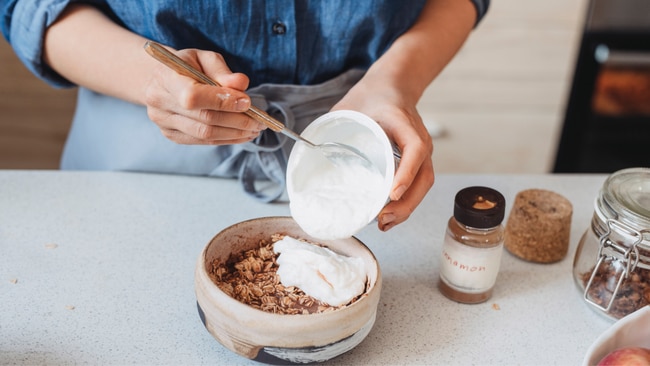
The power of plants
Last month, musician Lizzo’s comments section became more heated than a windowless HIIT class when the “About Damn Time” singer posted about reintroducing animal proteins (which can include meat, seafood, eggs and dairy) to her previously plant-based diet, in a bid to boost her energy and wellbeing.
While everyone’s entitled to eat in a way that feels best for them, here’s some VIP (Very Important Protein) intel: it’s absolutely possible to score enough from a plant-powered approach, if that’s your goal. In fact, mixing plant sources into any diet is a major flex for health and longevity, according to a recent analysis in The BMJ.
“For a long time, scientists believed you needed to pair specific plant-based proteins together [to get the complete amount required],” says Johnston. “But now, if you’re vegetarian or plant-based, the focus is less prescriptive; it’s more about diversity and getting plenty of protein from a variety of sources.”
So, forget back-to-back beans: your line-up could also include tofu, tempe, nuts and seeds, chickpeas and lentils, not to mention vegan protein powders, high-protein coconut or soy yoghurts, pulse-based pastas and high-protein breads. It can take more planning, she notes, and it’s worth checking in with a dietitian to make sure all your health and nutrition bases are covered.
As for those faux meats, protein puddings, protein ice creams and myriad other products dominating store aisles? You know the drill: be mindful of the ingredients list. “They can be high in salt and saturated fat, or just full of additives that we don’t necessarily want to have all of the time,” says Johnston. “So, yes, these foods can give us protein, which is a benefit in a lot of cases, but it’s about finding a balance.”
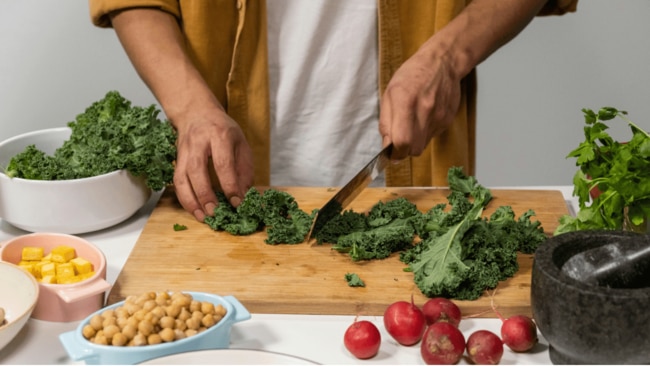
The future is protein-packed
Protein might be the shiniest macro of the moment, but it’s far from a flash in the steak pan. Scientists are exploring everything from the intricacies of how it impacts our health, to weird and wonderful sources like algae and edible insects as sustainable foods of the future.
There’s no doubt scoring enough of this all-star is a top-tier move, but what’s also important? Knowing that more isn’t necessarily more, and a balanced diet relies on a diverse line-up of other power players, too. As with any wellness hot commodity, the key is finding a way to clear through the noise, scroll with a critical eye (especially since nearly half of nutrition posts on Instagram contain inaccurate info, as per a Deakin Uni audit) and land where the best advice usually hangs out – in the middle ground.
“People advocating for extreme diets can glamorise and make them seem incredible, but a lot of the time they’re not based on scientific evidence,” says Johnston. “Balance will always be the answer. The biggest takeaway? Including protein in every meal, where possible, will help most people to hit their targets and feel the best they can.”
As far as Doube is concerned, eating in a way that champions her strength training and future health is now a priority for life. “I want to be 70 years old, able to lift a really heavy box above my head and be healthy for as long as possible,” she shares. “We need to have bodies that serve us.” Now, that’s a well-being goal worth shooting for – with a peanut butter smoothie in hand.
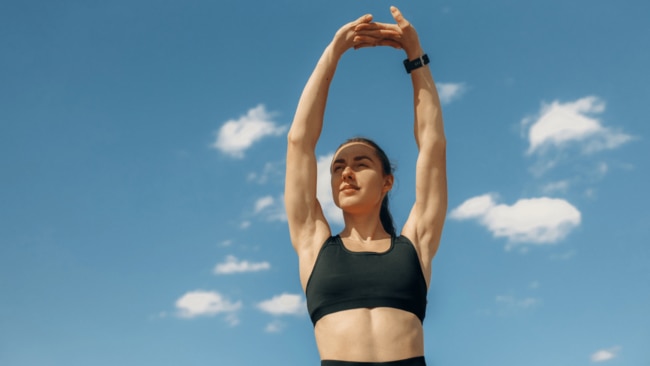
How to sneak more protein into your day
Think outside that canister of protein powder – from blending tofu into your smoothie to swapping out your pasta, getting more of this hero macro into your meals is surprisingly easy
#1. Rethink your drink
The protein in your blend doesn’t have to come from a powder. Stellar sources including kefir, Greek yoghurt and cottage cheese work well in smoothies and beyond. “Silken tofu is also easy to blend and doesn’t have much of a taste,” adds Johnston.
#2. Play menu detective
Be mindful when you’re ordering out. “Meals in restaurants and cafes can sometimes lack protein,” says Johnston. “So, it’s about asking yourself, ‘What can I add to make it more satisfying?’” Think a side of edamame, tofu or shellfish.
#3. Build a better base
“If I’m having avocado toast, I’ll sometimes use one slice of regular bread and one slice of high-protein bread,” says McLeod, who likes Bürgen for the latter. “You could also mix some pulse pasta with the regular kind so you’re getting more protein there.”
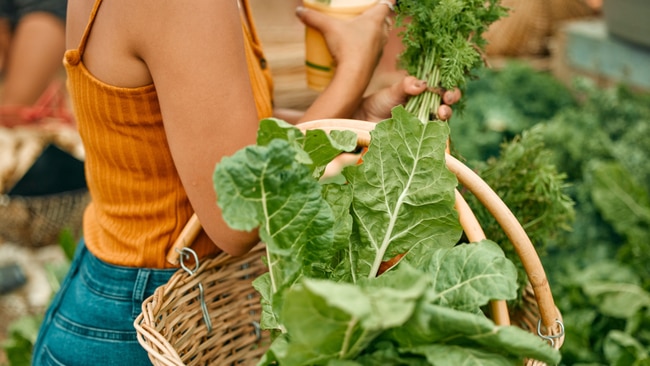
Add some protein power to your Instagram feed
Dr Gabrielle Lyon: @drgabriellelyon
Described by longevity guru Dr Mark Hyman as his “go-to for all things protein and muscle”, Dr Lyon is a physician and bestselling author. Follow for exercise and nutrition tips, as well as clips from her informative podcast.
Dan Churchill: @dan_churchill
A performance chef, podcast host and author of Eat Like a Legend, when he’s not smashing PBs and training for his next mara, Churchill shares inspiring insights, workouts, foodie tips and, of course, recipes, while keeping it real on his feed.
Natalia Rudin: @natsnourishments
The personal chef shares fast, easy recipes with her 1.4 million followers. Formerly plant-based, the health and nutrition coach reintroduced eggs, cheese and fish into her diet and posts simple ideas to supercharge your wellness.
Simon J Hill: @simonhill
In his bio, the nutritionist, author and host of The Proof podcast promises “lifestyle changes to live better for longer” – and his content certainly delivers. Follow for science-backed, informative chats about health with leading experts.
Drew Harrisberg: @drews.daily.dose
An exercise physiologist, sports scientist and diabetes educator, Harrisberg draws on his personal experience as someone who has type 1 diabetes and follows a plant-based diet to create content for his community.
Sally O’Neil: @thefitfoodieblog
The clinical nutritionist founded Status 8020, a nutrition coaching and workout platform, to help women ace their health goals. A huge advocate for incorporating protein into your diet, hit follow for healthy meal-planning inspo.
More Coverage
Originally published as How protein became the world's hottest macro




